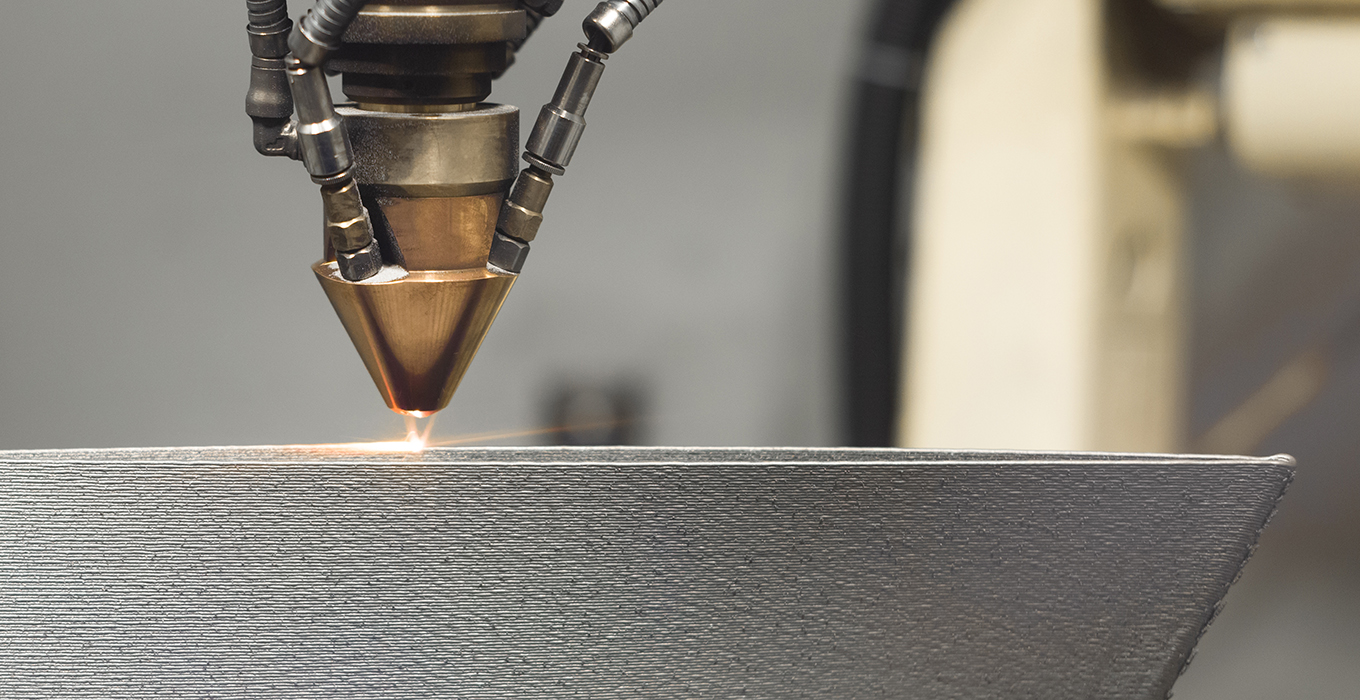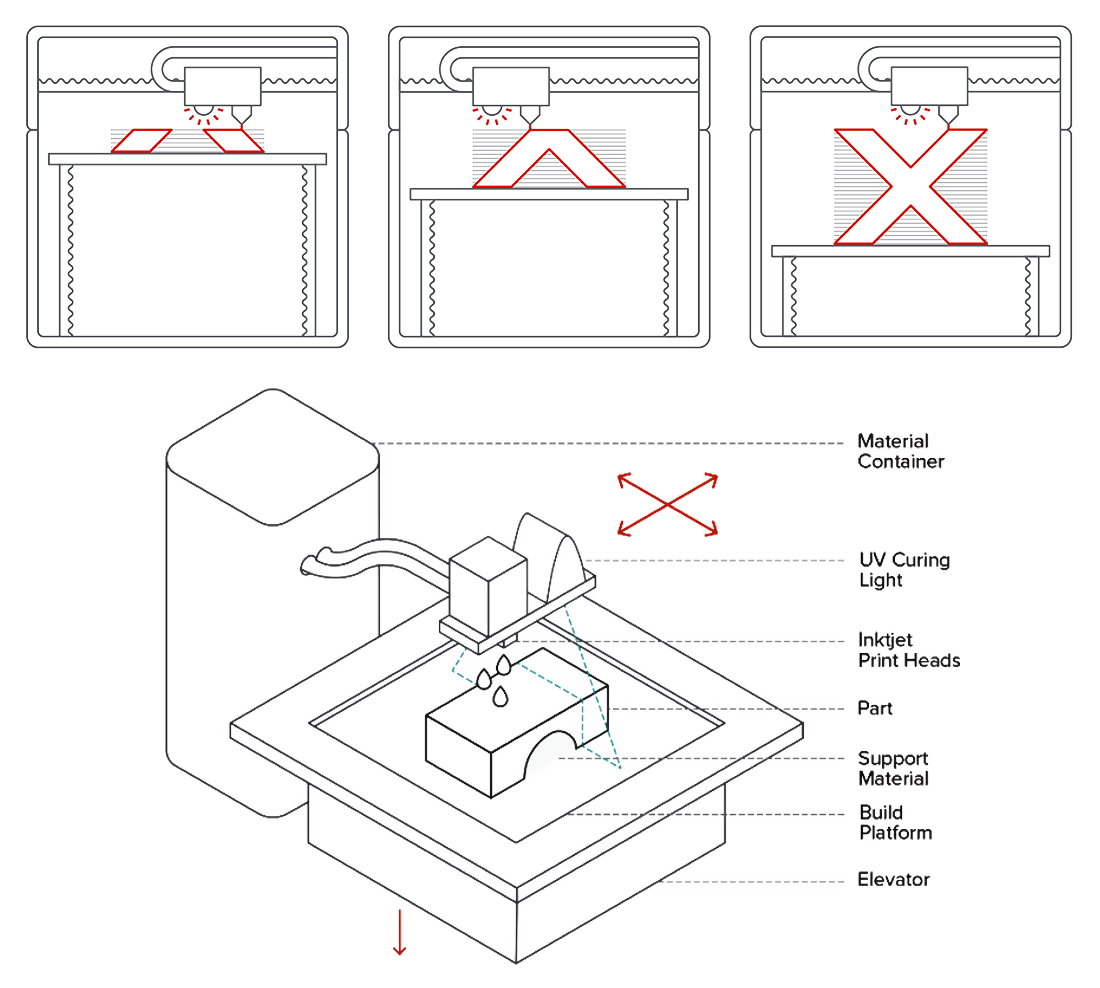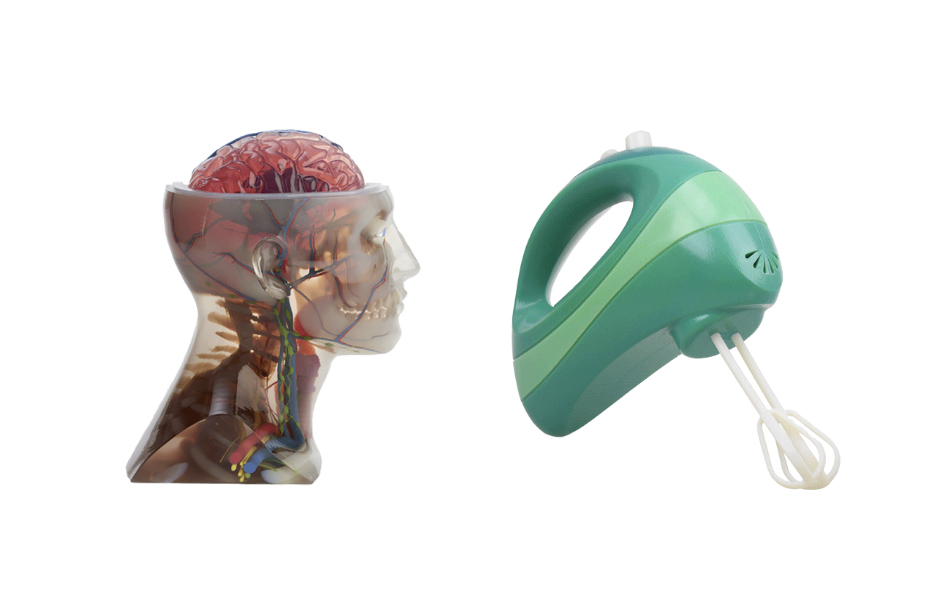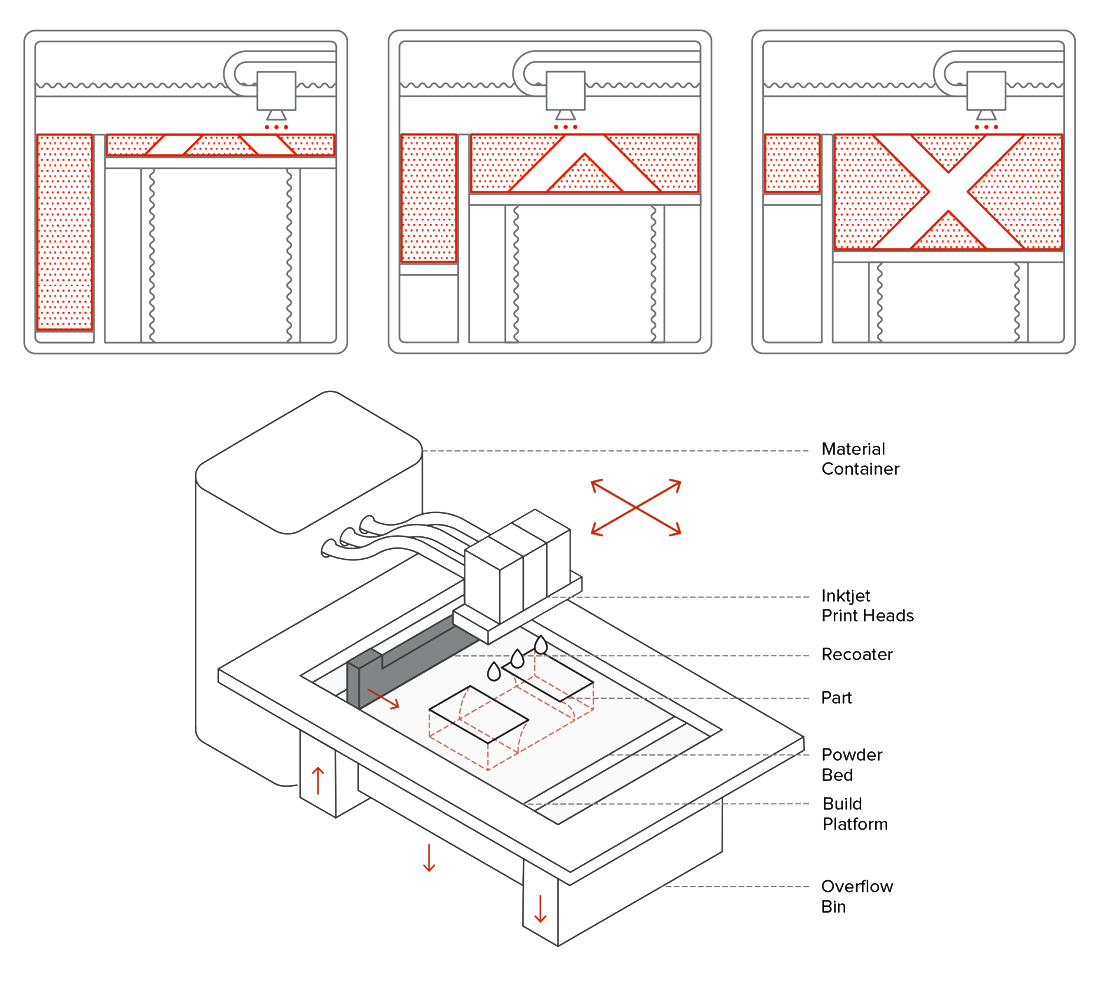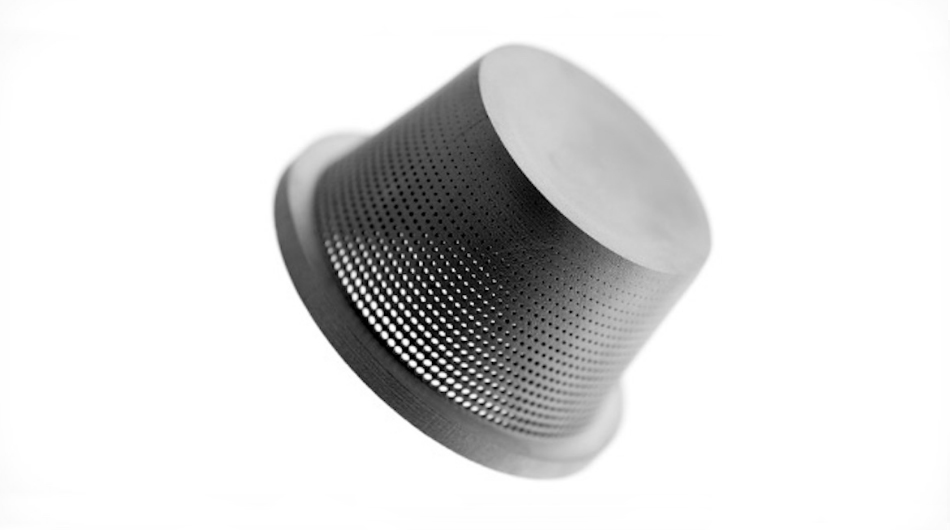In this series, we’ve covered the history and growing popularity of 3D Printing and the various types of technologies available on the affordable scale that garage tinkerers or smaller businesses can use in-house. We’ve now arrived at Exotics and Metals, consisting of more expensive options that are usually for specific use cases. It’s more difficult to justify bringing these technologies into a smaller company, and it can be an expensive option for outsourcing. That being said, every year there are more innovations occurring in these fields which will hopefully bring costs down and increase efficiency in the future.
Material Jetting (Polyjet)
Material jetting–commonly known under the Stratasys trademark Polyjet (which is still under patents)–is a process whereby an inkjet printing head is used to dispense precise droplets of photopolymers onto a build surface, which is then cured by UV light (similar to SLA).
Image credit: 3D Hubs
Polyjet allows full color prints and multi-material prints with varying mechanical properties (eg. equivalents to injection molded parts with rubber overmolds). Thanks to Polyjet having the smallest layer height resolutions in any 3D printing technology (16um) and the best dimensional accuracies (XY resolution of 0.04mm), these prints look and feel almost identical to injection molded parts. Polyjet parts are truly remarkable to hold and look at.
Incredible models created by Material Jetting. Image source: Stratasys Direct
Because it uses photopolymers, most Polyjet materials are simulations or close analogues to real plastics like Polypropylene, ABS, and Rubber, but there are limitations to material properties and selections – just like in SLA. However, Polyjet is capable of printing soluble support structures for an easy cleanup.
Taking into account all of the above, it’s no surprise Polyjet is more expensive than other plastic 3D printing technologies and is therefore often used only for looks-like, non-functional prototypes, such as investor demos for trade shows.
Pros and Cons of Polyjet:
+ The best resolution, accuracy and surface finish out of any 3D printing tech
+ Isotropic properties
+ Multi-material and full color prints
+ Easy post processing with soluble supports
– Very expensive
– Material property limitations (close simulations of real plastics)
Binder Jetting
Binder jetting utilizes a liquid binder deposited on powder, bonding the area together to form a layer, with the process repeated to create a solid part that doesn’t have full mechanical properties. These “green” parts are then post-processed where the binder is burnt out, and the remaining voids and particles are infiltrated with metal or sintered together.
There are several types of Binder Jetting, both for use with plastics as well as metals. Binder jetting for plastics are typically from Hewlett Packard’s Multi Jet Fusion (MJF) systems, including machines that can print full color models in Sandstone or PMMA powder, and produces parts that are very similar to SLS Nylon.
The metal Binder jetting process is similar to Metal Injection Molding (MIM). It has layer resolutions around 50um, and since initial bonding occurs at room temperature, layer warping and distortion artifacts are minimized. Furthermore, Binder Jetting is the only metal 3D printing technology to date that does not require supports. All of these points make metal Binder Jetting much more economical than other metal printing method.
Pros and Cons of Binder Jetting:
+ Most economical metal printing technology
+ Does not require supports
– Still relatively expensive
– Imperfect mechanical properties due to binder & porosity
– Requires post processing to remove binder & sinter/infiltrate
– Limited material selections
Powder Bed Fusion (DMLS/SLM)
There are several types of Powder Bed Fusion; most commonly Selective Laser Melting (SLM) and Direct Metal Laser Sintering (DMLS), but there are newer, more seldomly used metal manufacturing processes like Electron Beam Melting (EBM) and Ultrasonic Additive Manufacturing (UAM).
SLM and DMLS are almost identical; both use a high powered laser in a very well controlled and inert environment along with metal powder, in a fashion similar to SLS, with the main difference being SLM uses a higher power laser to fully melt the metal particles, whereas DMLS only sinters. SLM also produces parts made of single metals while DMLS uses metal alloys.
Practically, it seems the terms DMLS and SLM are used interchangeably, as Protolabs advertises DMLS as being fully dense and “welded”, and 3D Hubs advertises their metal printing process as both “DMLS/SLM”.
Although Powder Bed Fusion utilizes a build chamber of powder, it always requires supports, therefore increasing the post processing requirements. A benefit to these technologies, however, is that there are no debinding or sintering steps, and once a print is complete, the part is full metal, allowing immediate use after support removal or heat treatment. Powder Bed Fusion grants the largest variety of metals and alloys and can create parts out of Aluminum, Stainless steel, Tool steel, Titanium, Colbalt-Chrome, Inconel and others.
Pros and Cons of Powder Bed Fusion:
+ Wide array of metals and alloys printable
+ Excellent mechanical properties
– Requires supports and post process cleanup
– Very expensive
Conclusion
I hope you’ve found our 3D printing series to be informative and interesting, and you’ve walked away with a bit more understanding (and appreciation) of this evolving technology than when you started.
If you are curious about some of the 3D printing projects that MistyWest has worked on, we’d be happy to tell you more about them. Send an email to [email protected] and let us know why you’re reaching out!
